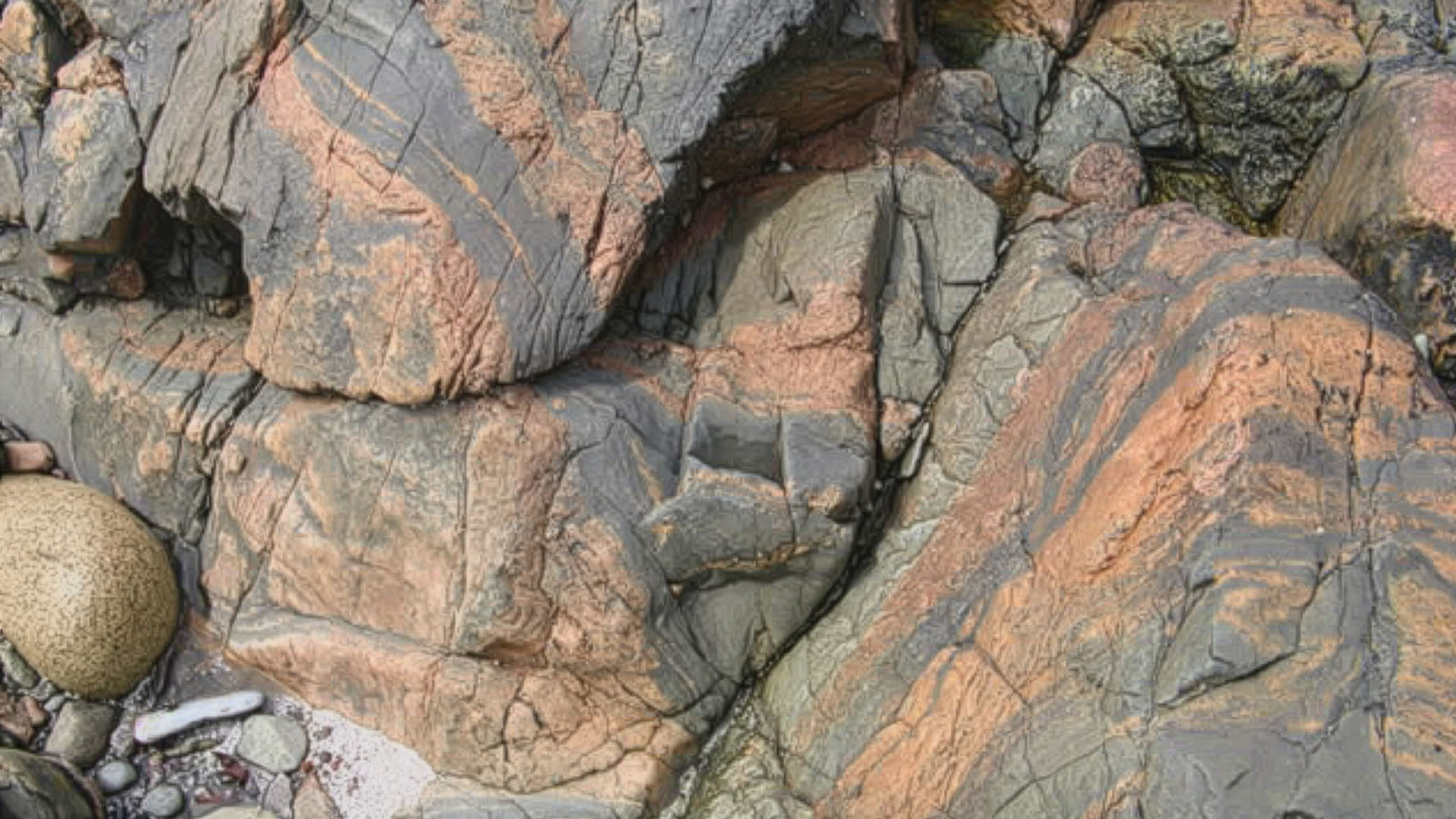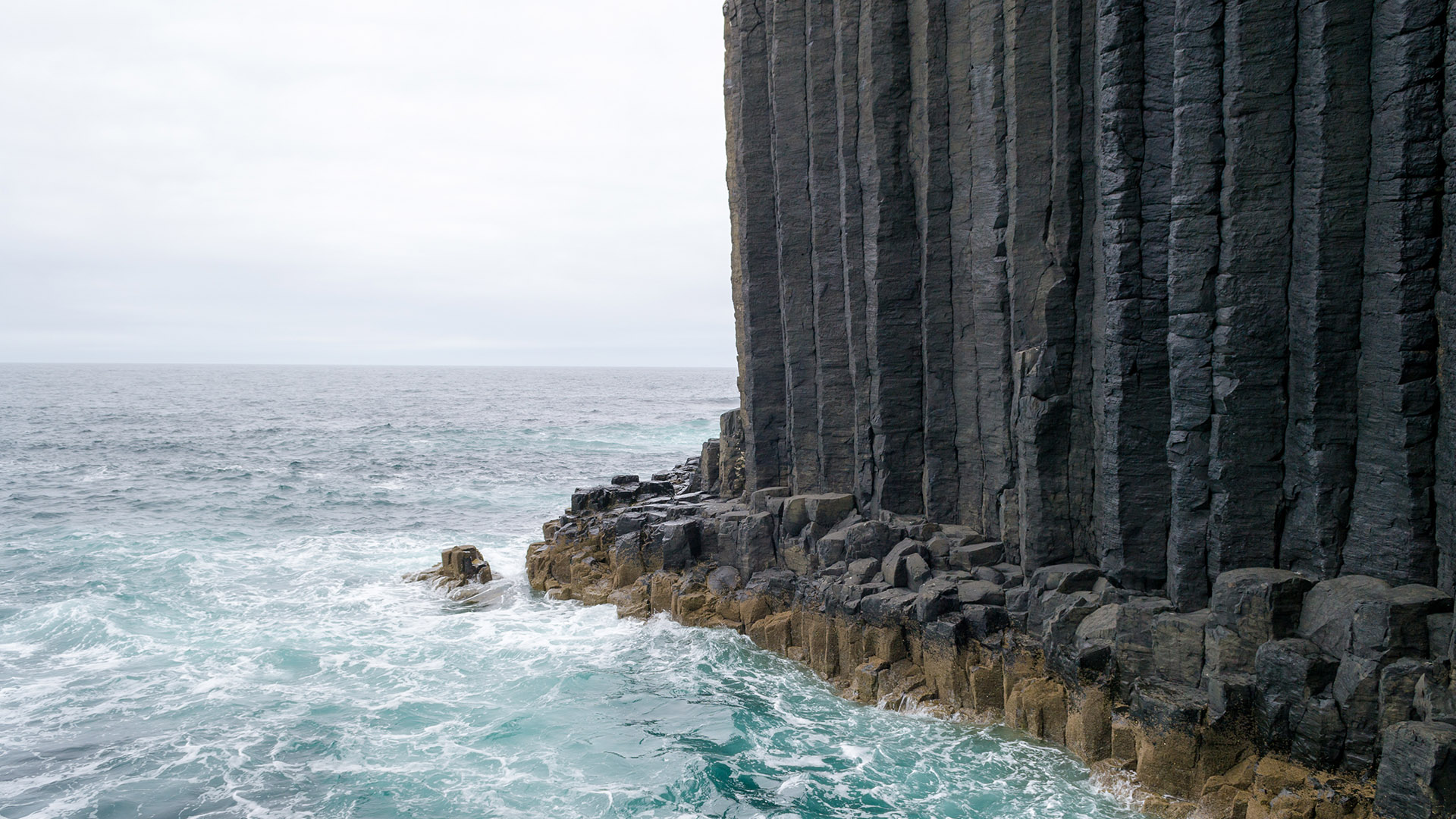The Isle of Mull, a captivating island in the Inner Hebrides of Scotland, isn’t just a haven for wildlife; it’s also a geological treasure trove, revealing a dramatic history stretching back billions of years. From ancient bedrock to volcanic upheavals and glacial carvings, Mull’s landscape tells a story of immense power and change.
Ancient Foundations
The story begins with the Lewisian Gneiss, some of the oldest rocks in Europe, found on the nearby Isle of Iona. These rocks, dating back a staggering 2 billion years, provide a glimpse into the Earth’s earliest history. On Mull itself, the Moine Supergroup, ancient folded and metamorphosed sediments around 1 billion years old, form a significant part of the island’s foundation. You can see these ancient rocks along the shore near Ardalanish and Gribun.

Lewisian Gneiss by Jonathan Wilkins, CC BY-SA 2.0, via Wikimedia Commons
Volcanic Fury
The most dramatic chapter in Mull’s geological story unfolded around 60 million years ago. As the North Atlantic Ocean began to open, the region experienced intense volcanic activity. Molten rock surged to the surface, creating vast lava flows that built up the island’s characteristic stepped plateaus. The island’s structure resembles a multi-tiered wedding cake, with thick layers of basalt lava resting on older rocks. The Isle of Staffa, with its iconic columnar basalt, is a prime example of this volcanic legacy.
Later, volcanic activity concentrated in southeastern Mull, forming a large central volcano. This central volcanic complex resulted in intrusions of various rock types, including the unique Loch Ba Ring Dyke and felsite structures. The mountains of Mull’s central igneous complex were formed during this period of volcanic explosions and earthquakes.

Staffa’s spectacular basalt columns rising from the sea.
The Ross of Mull Granite
In the southwest, the distinctive pink Ross of Mull Granite offers a contrast to the dark basalts. Formed around 420 million years ago during the Caledonian Orogeny, a major mountain-building event, this granite has been quarried for centuries and used in notable structures across Britain.

Distinct pink granite on Fionnphort Ross of Mull
Carved by Ice
The final shaping of Mull’s landscape came from the Ice Age. Glaciers carved out deep U-shaped valleys, leaving behind long lochs and features like P-forms (channels cut in the rock by glaciers) on the shore of Loch na Keal. Evidence of glaciation is abundant, with glacial erratic boulders of granite found on Iona and drumlins (mounds of glacial debris) visible in Glen More.
A Dynamic Landscape
Mull’s geological history is a testament to the Earth’s dynamic processes. From its ancient bedrock to its volcanic past and glacial sculpting, the island offers a unique window into the forces that have shaped our planet. Exploring Mull is like taking a journey through time, with each rock and landform revealing a piece of its fascinating story.

